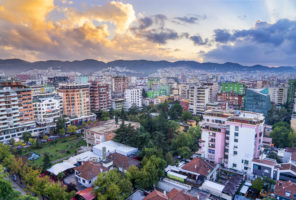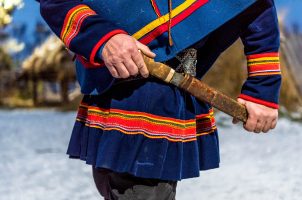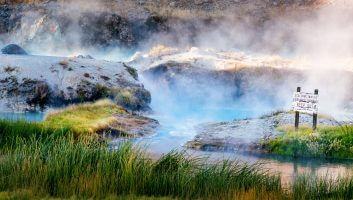Support Hidden Compass
Our articles are crafted by humans (not generative AI). Support Team Human with a contribution!
“Out of all the cold darkness and glacial crushing and grinding comes this warm, abounding beauty and life to teach us that what we in our faithless ignorance and fear call destruction is creation finer and finer.”
— John Muir, Travels in Alaska
Picture the day the San Andreas Fault finally blows “The Big One,” and a long, long float at sea ends when Los Angeles crashes into the southern coast of Alaska. Try to imagine it letterboxed and color-graded and starring Matt Damon — a blockbuster grand enough for Hollywood itself. Mediterranean-style mansions crumble under the weight of a single subarctic winter. Caribou feed along the yellow lines of Sunset Boulevard. Fishermen, in their waders, use the broken remnants of I-5 as floating, cement fishing stations throughout Cook Inlet.
Of course, it won’t go like this. Sure, 100 million years from now, L.A. will likely have broken off the mainland and approached the Alaskan coast like a timid high-schooler approaching first base. But the mansions and I-5 — hell, even the San Gabriel Mountains — will be long gone. The Kenai fjords will be long gone. Sunset Boulevard will be long gone. Fishermen will be long gone.
But maybe, just maybe, she will still be here, a supreme giant — a queen — growing out of a field of coconut trees.
~~
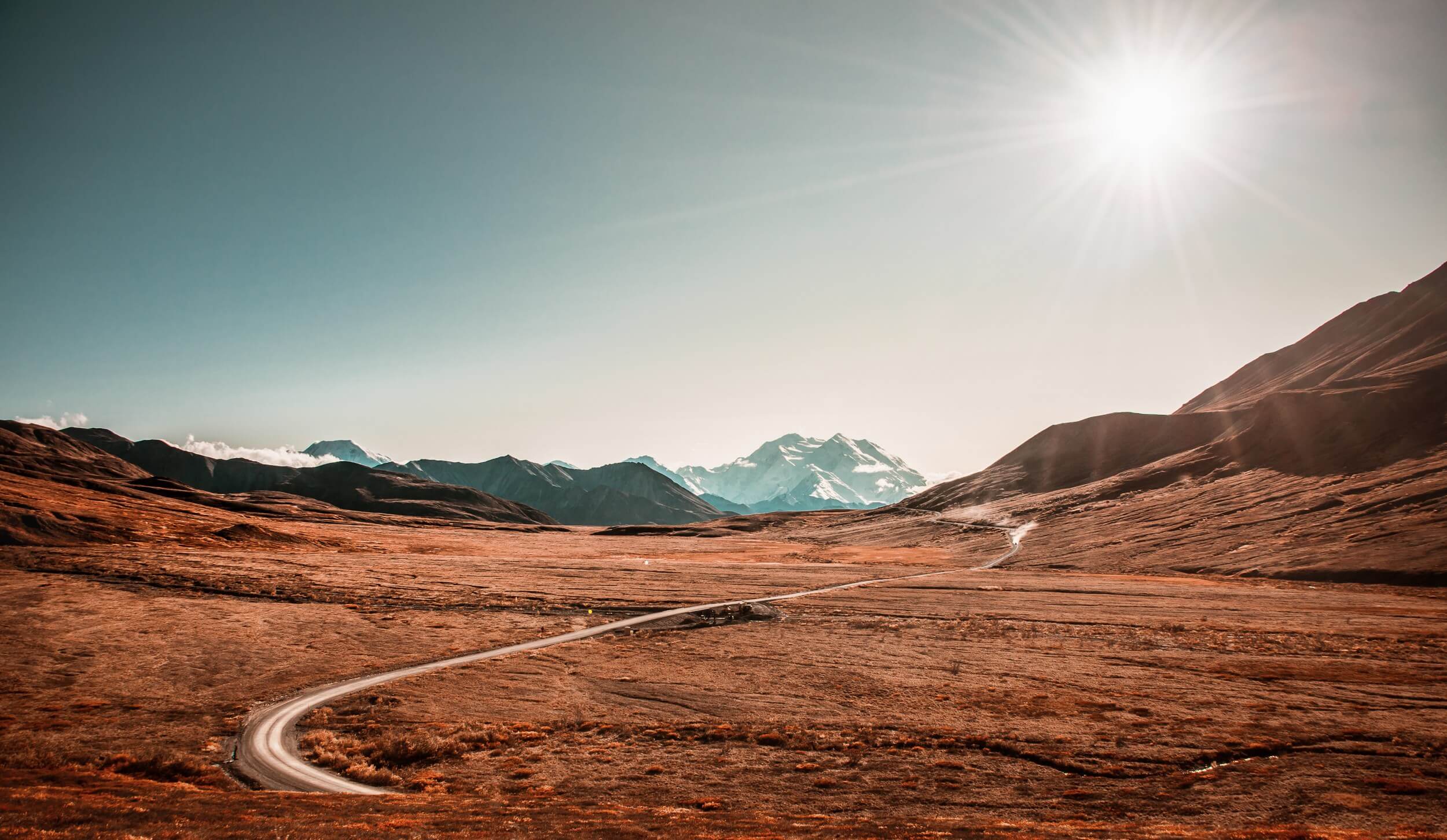
Snowy Denali rises above the autumn landscape in Alaska. Photo: Jacqueline Kehoe.
She is Denali. Somewhere around the last mile of the eponymous national park’s only road, the Alaskan low tundra turns crimson in all directions: shades of scarlet as far as the eye can see. Quigley Ridge — named after Fannie Quigley, the five-foot-nothing, bear-shooting “Little Witch of Denali,” and her husband — rises just over the balding hillsides of alder, dwarf birch, and granite.
My tiny, soft-voiced guide could pass for Quigley’s great-granddaughter. Naomi’s fresh from Arizona, here to study forest management. I must only be a decade or so her senior, but with her diminutive nervousness and her big dreams, she makes me feel ancient, closer to my last season than my first.
Despite her aura, Naomi knows her plants. She points out some edible lingonberries doing well on the ridge in the early autumn heat.
“There are plenty of ‘mountain snacks’ around these parts,” she says, “even still, what with the snow season starting later and getting shorter. These might have another two weeks!” She picks a few and hands some to me, carefully placing one on her tongue like a mountain breath mint. They’re like little cranberries: tangy, sour, and tough. Bear food. Popping a few back, I take the quiet moment to tie my jacket around my waist. September’s usual chills have already vanished by 10am.
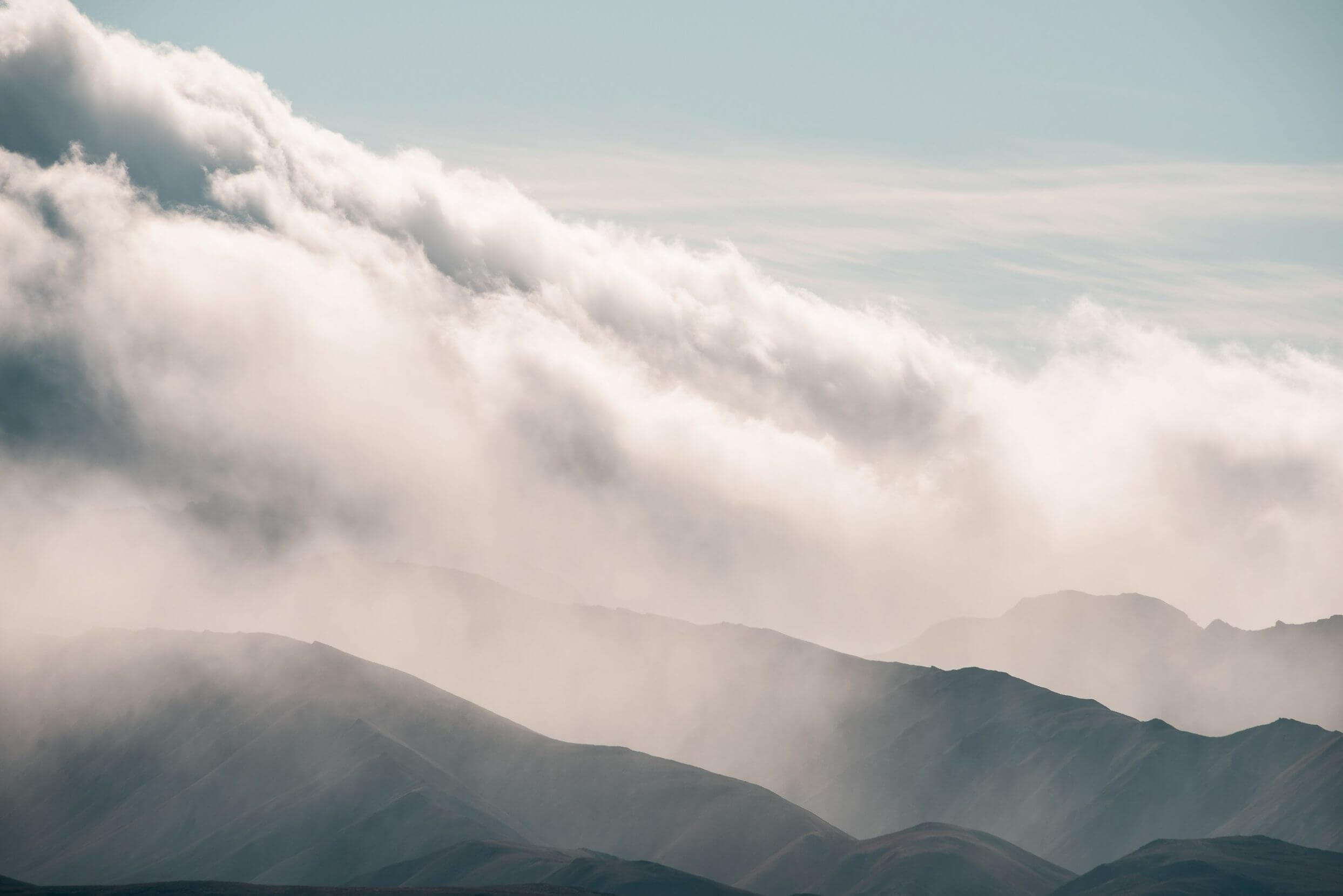
Denali and her neighbors can be elusive. In the Alaska Range, cold, dry, northern weather systems collide with warm, wet, southern ones, often producing clouds that obscure the immensity of Denali. Photo: Jacqueline Kehoe.
The second-to-last day of the park’s main season has turned out to be spectacular. There’s not a lick of frost on the ground. From here, Denali, an Athabascan name meaning “the high one,” stands supreme in rare sunlight, her usual cloudy security blanket tossed aside. At 20,310 feet — and rising an inch or so every 50 years — she’s the highest peak on the continent, a matriarch, a giant above her own Alaskan Range. Peter’s Dome, her next-door neighbor, stands nearly 10,000 feet shorter. From northern base to summit, Denali is more than a mile taller than Everest.
She is only a “mountain” because there is not yet a better word.
~~
Back when Alaska was a dinosaur superhighway, when hadrosaurs and therizinosaurs were wandering through a Seattle-like climate, Denali was deep in the womb of the Earth, a granitic pluton unfamiliar with the light of day. Born of two faults, she grew up during warm summers and wet winters, raised in a world full of sequoia and palm-like trees. Way back then, global temperatures were upwards of 20 degrees Fahrenheit warmer. Greenland was Florida; South America and Africa were nearly conjoined twins; California — and its sequoias and palms — didn’t yet exist.
It took her only 60,000,000 years to become the northern grand dame she is today. She is still youthful. Still growing. Young enough that she might see the world she was born into again, this time ushered in by humans.
~~
Neither Denali nor Alaska are my home. Madison, Wisconsin is. And when I explore there, I usually imagine myself in the Wisconsin that was: tens of thousands of years ago, when much of the state was buried under 10,000 feet of ice. I can trace the handiwork of these massive glaciers just about anywhere, from the drumlin underneath the University of Wisconsin-Madison’s Bascom Hall, to the rollercoaster ridges of the Kettle Moraine. Wisconsin as I know it is a grand origin story, but it can feel like a hard-to-decipher ledger, a beauty that’s both frustrating and rewarding in its unassuming mystery.
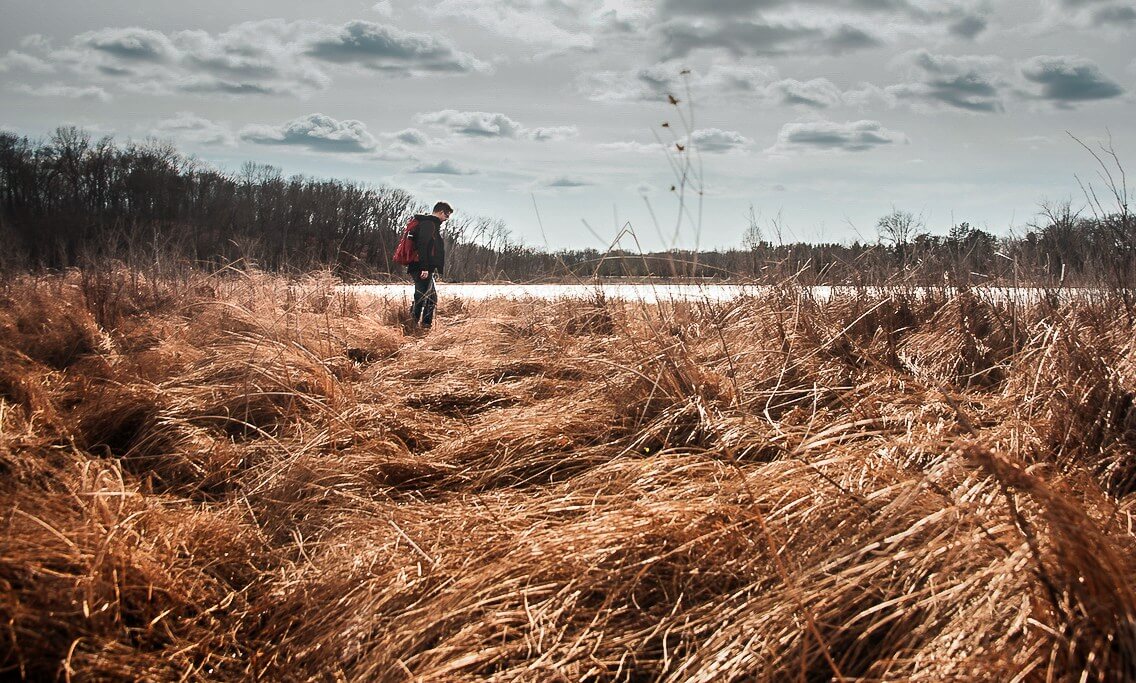
When Jacqueline Kehoe explores her home state, she tries to imagine it as it was once was — encased in ice. Photo: Jacqueline Kehoe.
John Muir grew up just north of my home — riding toboggans on packed sheets of snow; learning to swim in a little kettle lake; riding his pony, Jack, on petite glacial ridges. I try to see this land as he did: “Oh, that glorious Wisconsin wilderness!” he wrote, celebrating its past and its present. Its gentle oak savannas, its wooded hillsides, its warblers and mosquitoes. I like to think it was Wisconsin that made Muir fall in love with glaciers — how they create and how they destroy. That it was Wisconsin that compelled him to take seven trips to Alaska, compelled the world to name a glacier after him there, and compelled Muir to admire glaciers in all their states, including the long-gone one.
“Glaciers move in tides,” he journaled. “So do mountains. So do all things.”
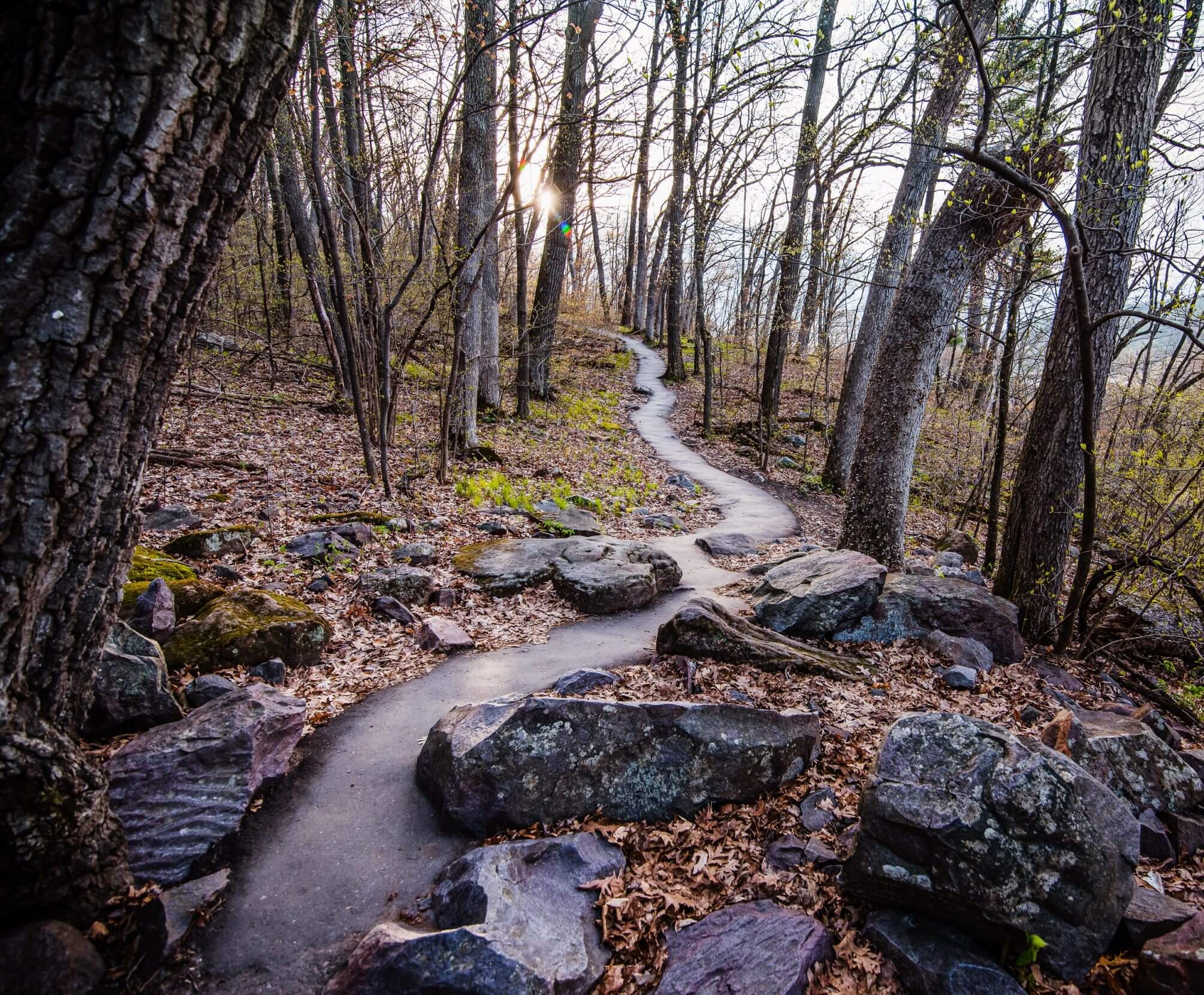
When the glaciers of Wisconsin ebbed, they left behind a state sculpted by ice. Wisconsin’s 1,000-mile-long Ice Age Trail highlights this history. Photo: Jacqueline Kehoe.
~~
“The fireweed bloomed early this year,” notes my bus driver, Shelly, pointing to the flowerless, dark-red stalks. “The event used to mark the end of summer, a kind of natural countdown as the weed blooms up in these beautiful” — she waves her hands — “pinkish purples. I hated it as a kid. It meant school was just around the corner!”
In recent years, it’s started blooming as early as June, leaving late summer without its streaky, highlighter rage.
Shelly’s a fireweed herself. She’s a wildlife photographer on the side — the kind you can picture diving elbow-first into a marsh for the right shot. Her competence and confidence flow through her limbs, a strength likely imparted by a dozen harsh Alaskan winters. I bet she shoots back lingonberries like vodka.
“There’s a lot that’s changing, and you can see it.” She hesitates, glancing left and squinting her eyes through the massive front window of our repurposed school bus. “Unless you can’t,” she adds. “You know pikas? Those cute little things? They’re moving north to higher altitudes to escape the heat. No one sees them anymore.”
“They’re an indicator species, yeah?” I ask. Their habits tell us how an environment is doing — whether it’s livable or not. In fact, Pikas aren’t just moving to escape the increased heat of summer; they’re also moving to use snow for insulation in winter, and to find the right kind of vegetation.
“Yeah. Some say they could be extinct in 100 years,” Shelly says.
My eyebrows rise.
Shelly is all about numbers, stats, percentages. She speaks passionately about history, ecology, the size of a ptarmigan’s wingspan — she loves it all, and dearly. “Easier to leave an impression on people,” she says. She halts the bus to yell toward the back about a few white dots on the hillside — Dall sheep, apparently, to her. White dots to the rest of us.
Shelly throws the green beast of a bus back in gear and whips around a corner. Her hand shoots up, pointing out the window. “See that? That crumbling shelf there?” she asks. “That’s permafrost. It’s melting, which is bad news. It supports the road. You should walk on it if you get the chance.”
Beyond serving as a supportive skeleton of Denali National Park, permafrost is also a natural carbon-storage system, releasing carbon dioxide and methane into the atmosphere as it thaws and decomposes. She tells me it’s expected to go from 51% of land cover here to 6% by 2060.
“Six percent?” I ask, assuming I misheard.
“Six percent.”
Shelly rolls the bus along the curves past Polychrome Pass, halting to watch a 1600-pound bull moose step into rushing, glacial river braids as though they’re mere puddles collecting on the curb after the rain.
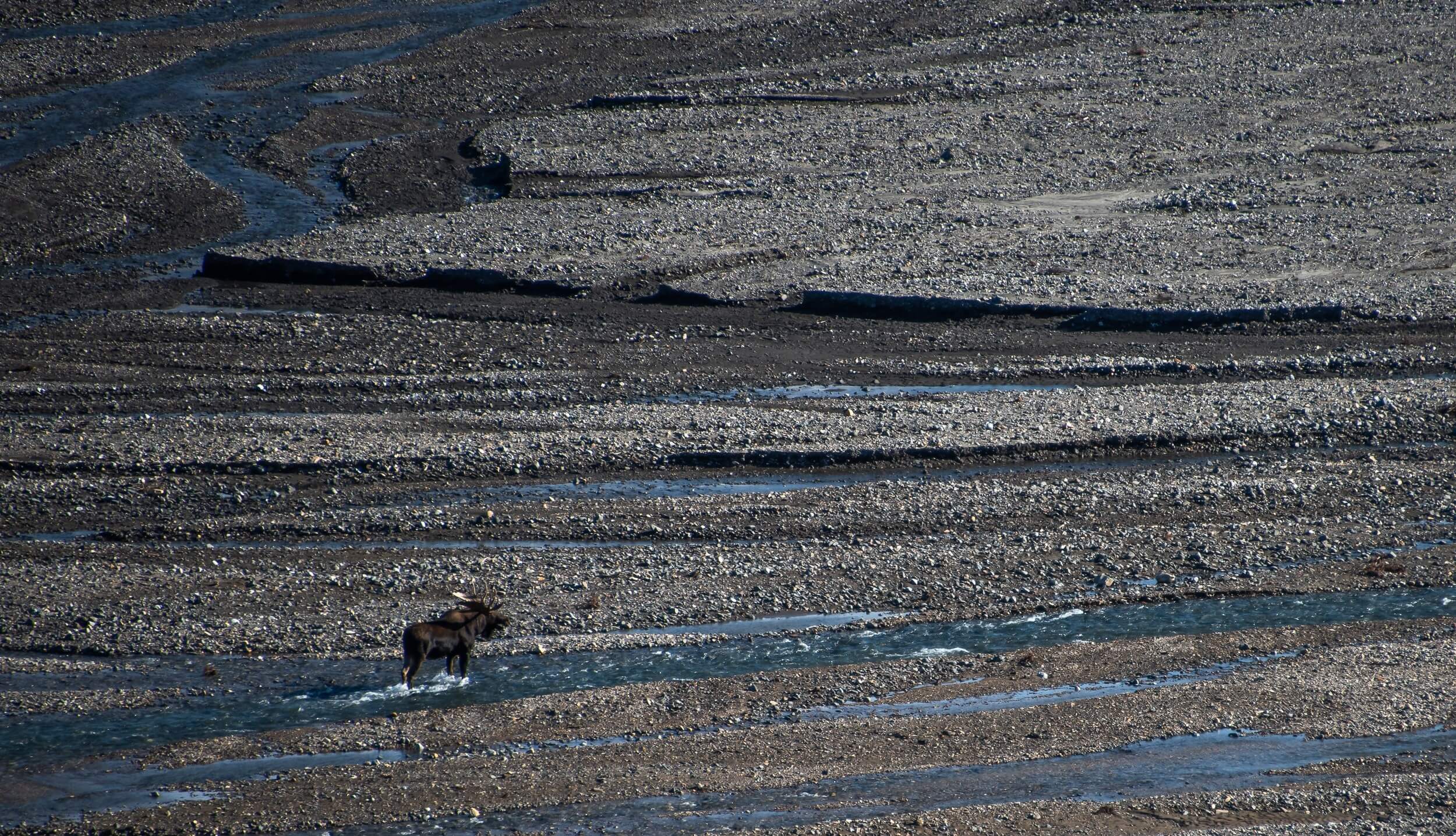
A bull moose stands in the flowing braids of a glacial river. Photo: Jacqueline Kehoe.
Another bus just like ours, but blue, turns the corner, coughing up a whirlwind of gravely dust, obscuring the mountain and the moose. I quickly shut the window, coughing.
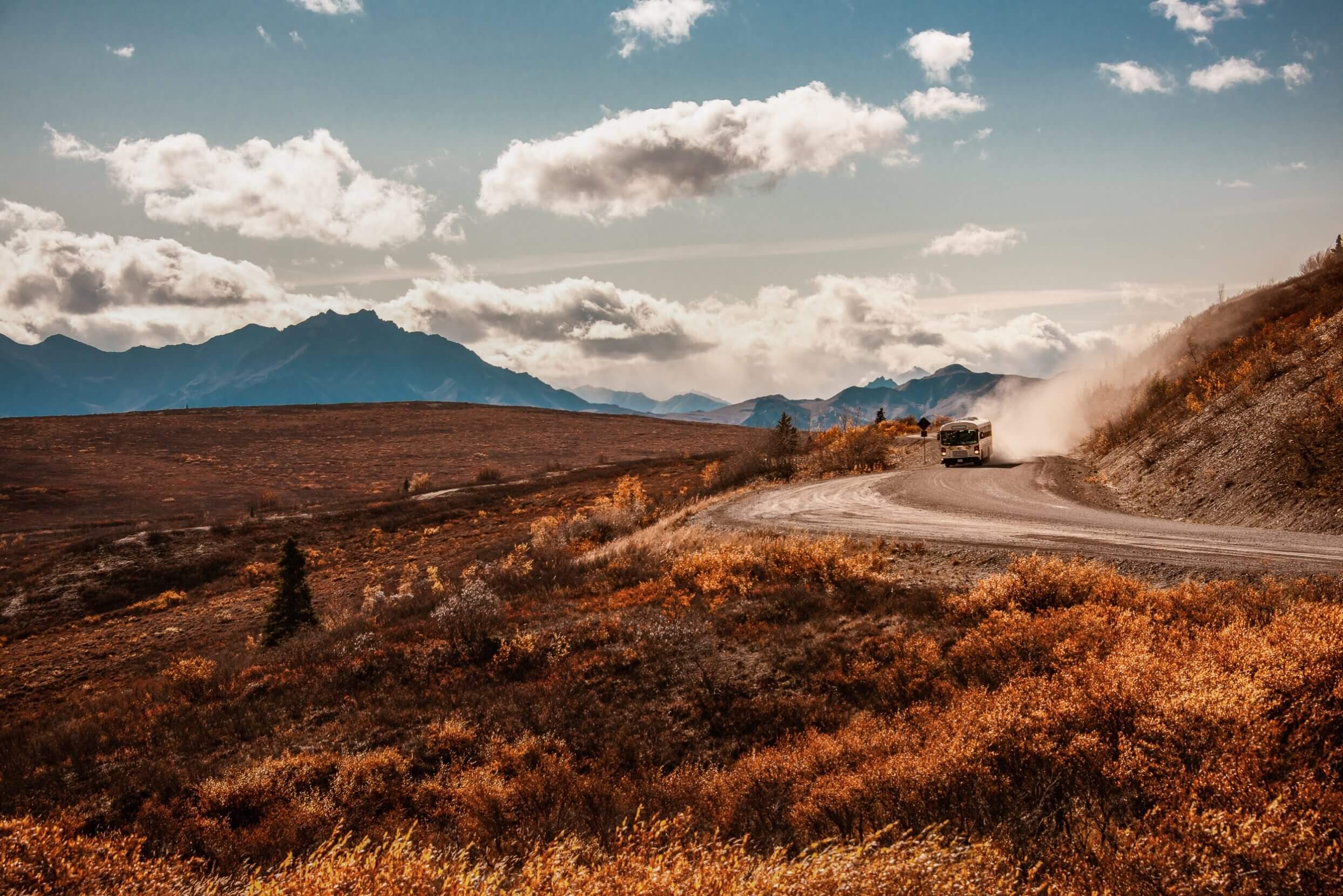
On a lonely road in Denali National Park, a converted school bus transports visitors through the park and through time. Photo: Jacqueline Kehoe.
Once the dust begins to settle, the shape of Denali comes into focus. Edging out of my 300mm range, the moose becomes a mere suggestion of a beast, a speck lost in the dust and diesel fumes.
~~
“The most extensive, least spoiled, and unspoilable of the gardens of the continent are the vast tundras of Alaska,” wrote John Muir in 1901, speaking of the state as if it existed outside the concept of time, as if clocks and calendars couldn’t brave the Yukon. “This is Nature’s own reservation,” he wrote, “and every lover of wildness will rejoice with me that by kindly frost it is so well defended.”
One hundred and eighteen years later, in 2019, Anchorage hit 90 degrees Fahrenheit for the first time in recorded history. Leading up to that year, the loss of summer ice and snow in Denali National Park measured 60 times greater than that of the pre-industrial era.
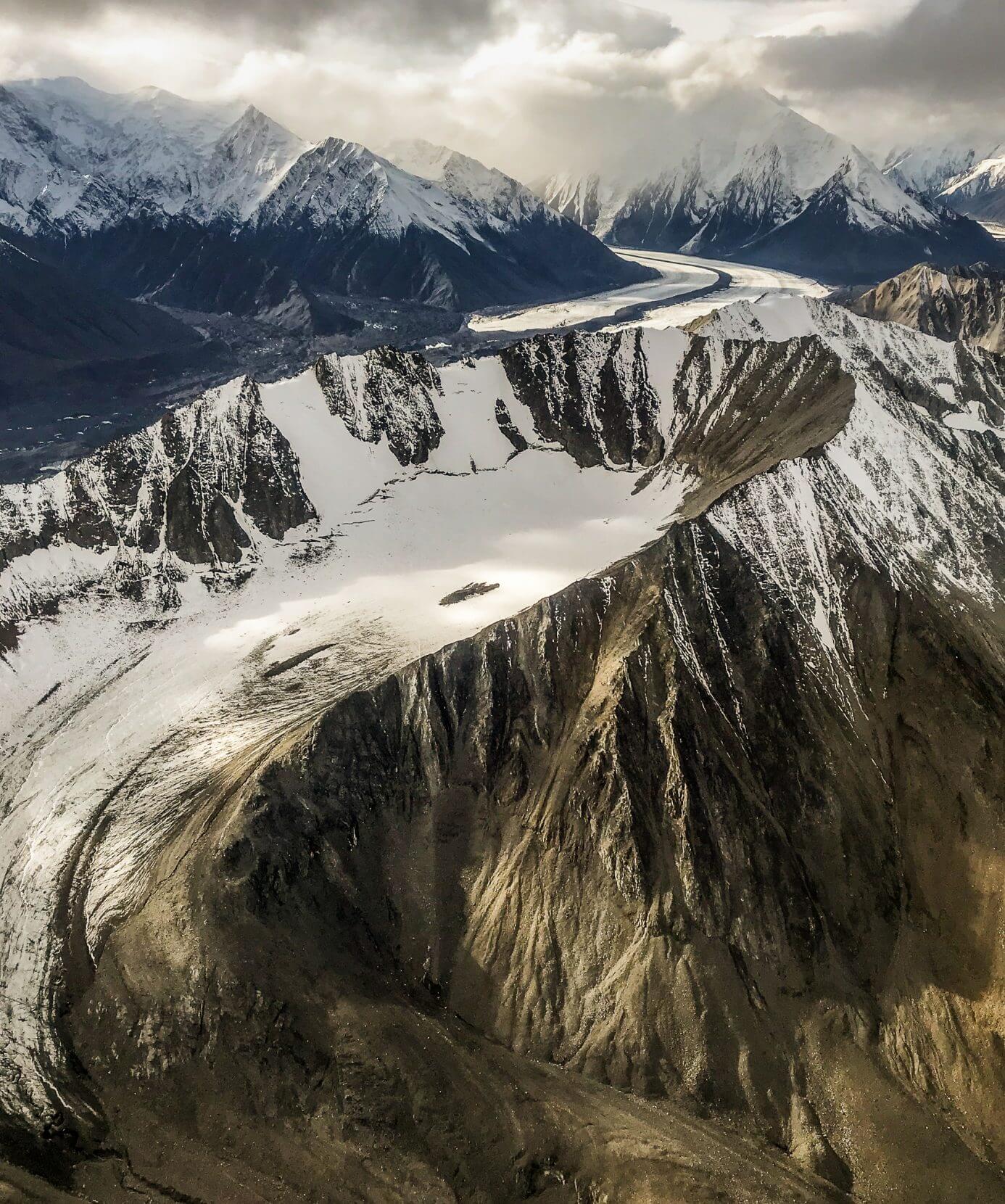
John Muir imagined the glaciers of Alaska would be safe — “unspoilable.” But as the ice thins, and the rate of ice loss today vastly outpaces pre-industrial loss, author Jacqueline Kehoe imagines a different future for the Alaskan range. Photo: Jacqueline Kehoe.
Southeast of Denali, the glacier named for Muir, already shrinking when he saw it, has retreated roughly 30 miles since 1892, and has thinned by more than 2,600 feet since 1941.
What will we see in 100 years? 1,000?
What if, in 10,000 years, Denali is completely abandoned by “kindly frost” and fated to rise above silos and barns? Little reminders of its wildness would hang on: Strings of glacial lakes would interrupt the plowed cornfields. Institutions would sit high on drumlins. Eskers and kames — little piles of glacial debris — would line the highways. And, of course, Denali herself would still be there, her flanks turned verdant and alive.
All of that is to say: What if, in 10,000 years, Denali rises over a land that has become Wisconsin? My home. Muir’s home. A place once riddled with two-mile-thick glaciers, long abandoned by an icy defense. A place with fields abutting glacial lakes, institutions high on drumlins, highways skirting the eskers. To be a “lover of wildness,” should I mourn for Denali then? For Wisconsin now? Should I not take joy in my home and its wilds?
How do you both rejoice in the water and weep for the ice?
~~
On the last night of the park’s main season, it’s quiet and surprisingly warm. I notice a beautifully tall woman standing at the edge of Reflection Pond, studying Denali — or maybe the mountain’s watery likeness — and I steal photos while she’s looking away. I’m photographing her in this moment. A moment when the pika are scrambling to find cold-enough territory; a moment when migrating caribou are wandering farther afield; a moment when glaciers are receding. But, through all this, Denali remains. She thrives. Even if we climb her, rename her, draw oil from her flanks, we cannot ruin her.
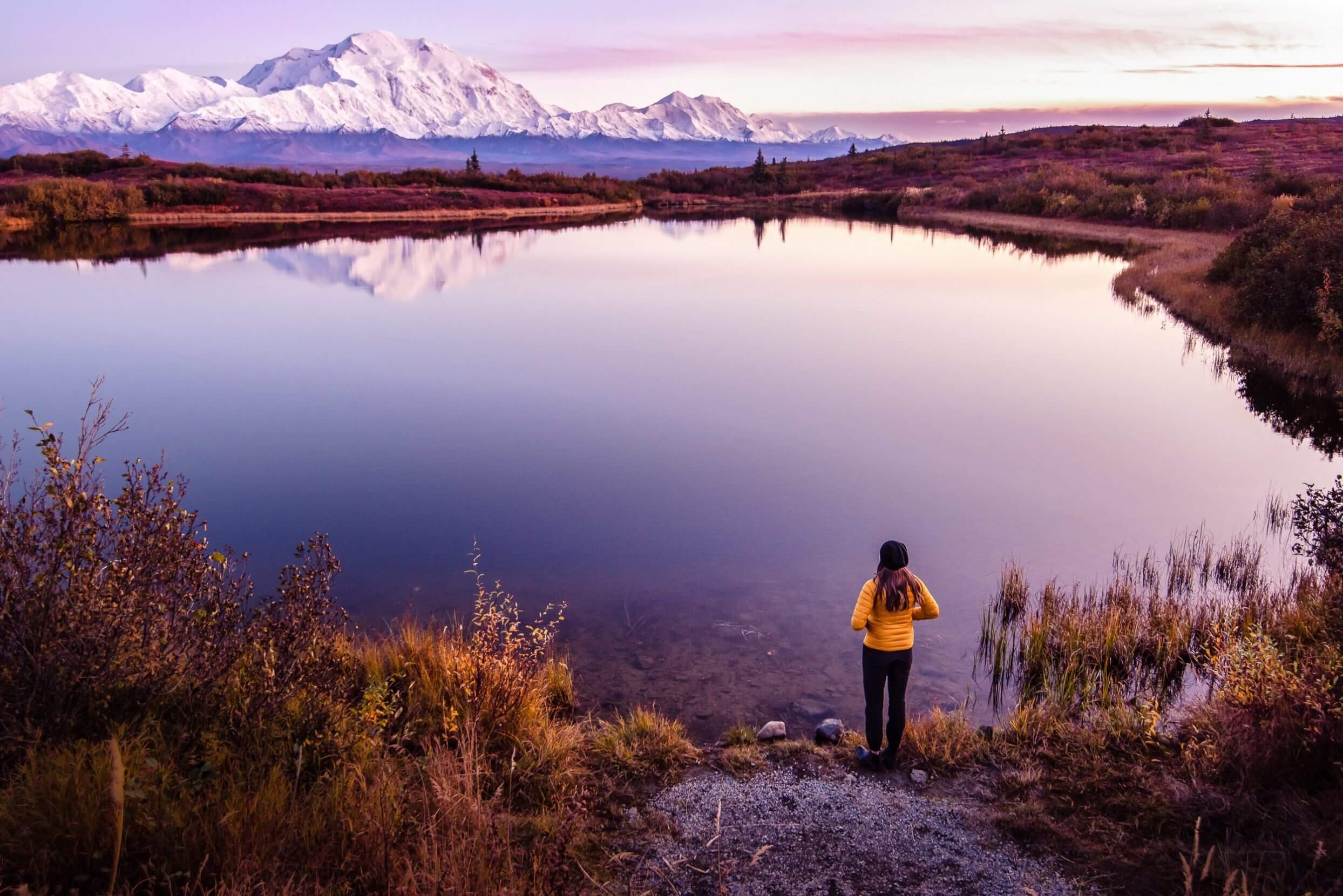
Denali reflects in the still waters of a lake. Author Jacqueline Kehoe reflects on where Denali has been, and where she is headed. Photo: Jacqueline Kehoe.
It’s a grim bit of solace, but it’ll do, thinking of her as almost immortal. Knowing she was once covered in sequoia and palm makes her hothouse future seem less apocalyptic. Less ruinous. I find comfort in the fact that, ultimately, this moment might not matter. You can handle it, I want to tell her. You have before.
She has no interest in my guilt or my words of encouragement. She will emerge victorious from the Anthropocene having heard none of them. She will go on — pikas, permafrost, or people be damned.
I walk back. Past Blueberry Hill, past Wonder Lake, Denali hanging there in pinks and purples, like she has for so long. I know I won’t see her again — that I shouldn’t see her again — but for tonight, we share this moment. She and I bathe together in the dimming Alaskan sky, two lovers of wildness, un-self-conscious and free, my six-foot immensity to her 20,310.
And rising.
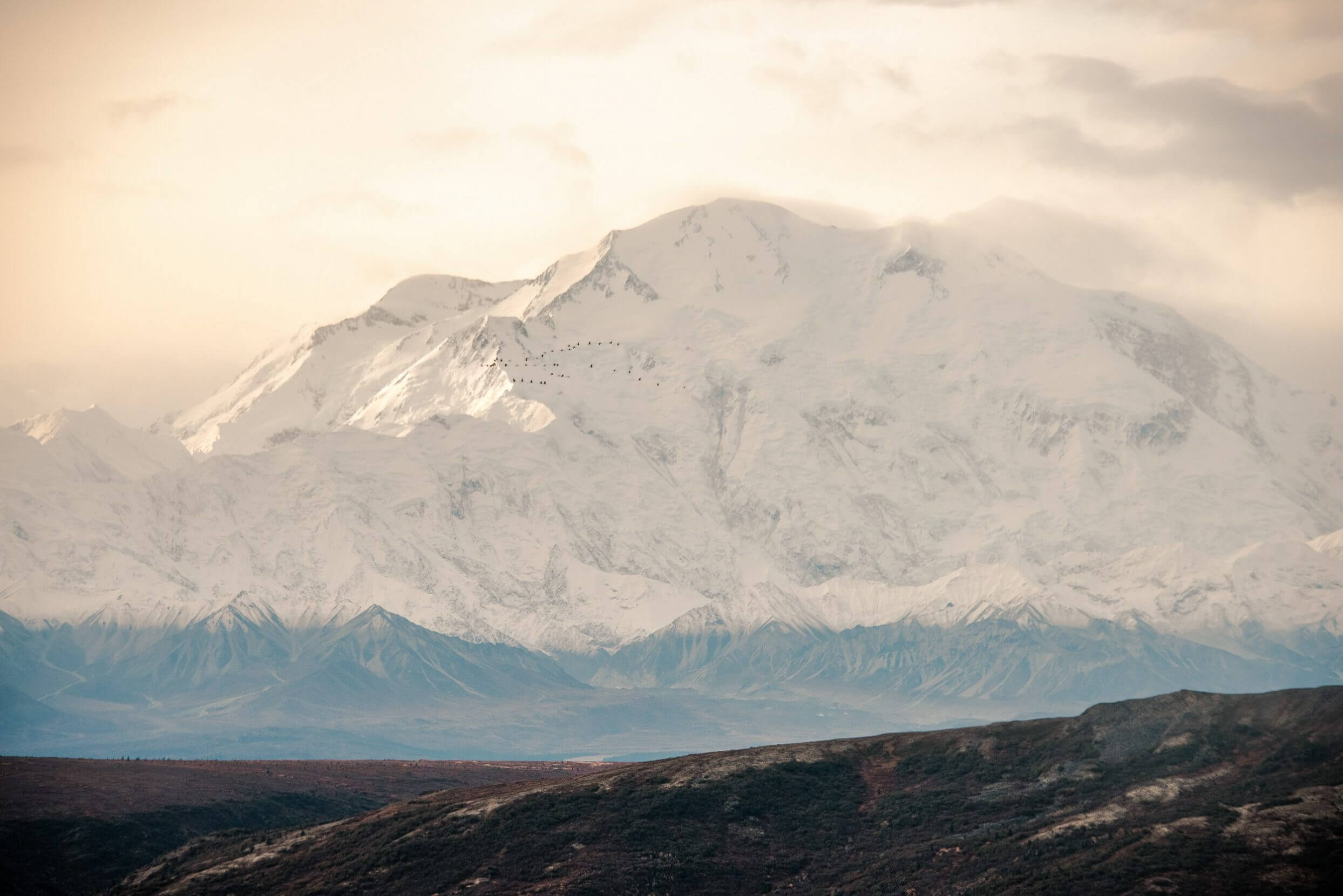
Someday she may be covered in sequoias and palms, but Denali will still stand. Photo: Jacqueline Kehoe.
Jacqueline Kehoe
Jacqueline writes about, thinks about, and photographs America's public lands.

